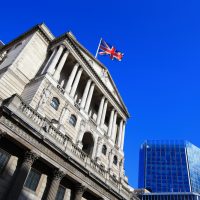
John Phillips, national operations director at Just Mortgages, said that the 0.25 per cent increase “came as no surprise to anyone” as the chancellor had warned rates could hit 2.5 per cent by the end of the year.
Phillips said that along with the cost of living crisis, the rate rise could mean pressure on household budgets will become the “greatest it has been for a decade.”
“While consumers have little control over their energy bills, they do have the opportunity to secure long term security in the form of a fixed rate mortgage. As a result, our network of mortgage advisers report that conversations with borrowers around longer-term fixed rates have never been higher,” he explained.
Colin Bell, co-founder and chief operating officer of Perenna, said that lenders had pulled 500 mortgage products, and average two-year fixed rates had reached a seven-year high.
He said: “This is clearly having a detrimental impact on consumers’ ability to get onto the property market. Flexible long-term fixed rate mortgages can provide a solution to the problem, allowing individuals to better manage their monthly outgoings, while avoiding any unnecessary stress caused by multiple interest rate rises.”
Figures from Moneyfacts show that the price of a five-year fixed rate mortgage is 3.17 per cent, whereas the price for a 10-year fixed rate is at 3.21 per cent.
Rachel Springall, finance expert at Moneyfacts, said: “Fixing for longer may be a logical choice for peace of mind with mortgage payments when other household costs are increasing. The differential between the average two-year and five-year fixed mortgage rate is much smaller than in previous years.
“However, aspiring homeowners may need to rethink whether they can even afford to step onto the property ladder due to rising costs and soaring house prices.”
Simon Webb, managing director of capital markets and finance at Livemore, said that there has “never been a better time” for borrowers to take out a longer-term fixed rate mortgage, as there would be further base rate and inflation increases this year.
“This will give people peace of mind that their monthly payments will remain the same for the long-term fixed period they choose,” he said.
Variable rate borrowers should opt for fixed rates
Brokers said that the base rate hike will obviously impact those on variable rates, and urge these customers to switch to a fixed rate.
Richard Pike, director at Phoebus Software said that the price increases could impact one in five borrowers, or around 800,000 mortgages.
Springall said that the difference between and average two-year fixed rate and a standard variable rate (SVR) is 1.75 per cent. Switching could save around £4,611 over two years based on a £200,000 mortgage over a 25-year term on a repayment basis.
She added that a rise of 0.25 per cent over the current SVR could add around £695 to total repayments over two years.
David Hollingworth, associate director for communications at L&C Mortgages, said: “Borrowers wallowing on lender standard variable rates have the most to gain from a review of their mortgage.
“Not only could they cut the cost of their mortgage and breathe some added flexibility into their monthly budget, but they could also elect to fix their rate to protect against the potential for further rate rises.”
Mark Harris, chief executive of SPF Private Clients, looks at the raise as demanding an extra £250 a year for every £100,000 on a variable rate remortgage, which adds up.
He said that those on variable rates may want to consider long-term fixed rates as they were “particularly competitively priced” but warned that there could be “heft early repayment charges (ERC)” if a borrower wanted to get out of a deal earlier.
‘Stampede’ of remortgage activity
Others said that the decision to increase the base rate to one per cent today could further heighten remortgage activity to a “stampede”.
Simon McCulloch, chief commercial and growth officer at Smoove, said: “Today’s rate hike could see the present rush to remortgage turn into a stampede. We are already seeing a surge in remortgaging.”
He explained that in the previous quarter, legal instructions on Smooves platform had gone up 67 per cent year-on-year and were up 15 per cent on the previous quarter.
“Expect frenzied refinancing and a very busy time for lawyers and mortgage brokers as the rate hiking cycle continues,” he warned.
Pike said that those looking to remortgage could find themselves having to accept a higher rate.
He added: “Brokers could be approaching their clients earlier and advising them to apply for a new fixed rate which will be valid for three to six months, depending on the lender.
“By locking in to a lower rate now rather than waiting to apply when their current deal comes to an end, borrowers should end up with a better deal.”
Harris added that activity in the remortgage market was “brisk” and some borrowers were considering paying the ERC to leave their existing deal early before prices rise even more.
“This can be worth doing but it is important to ensure any savings you make to your mortgage payments outweigh the costs involved. Rates can be booked up to six months before they are required and we are getting a lot of interest from motivated borrowers in doing this,” he said.















